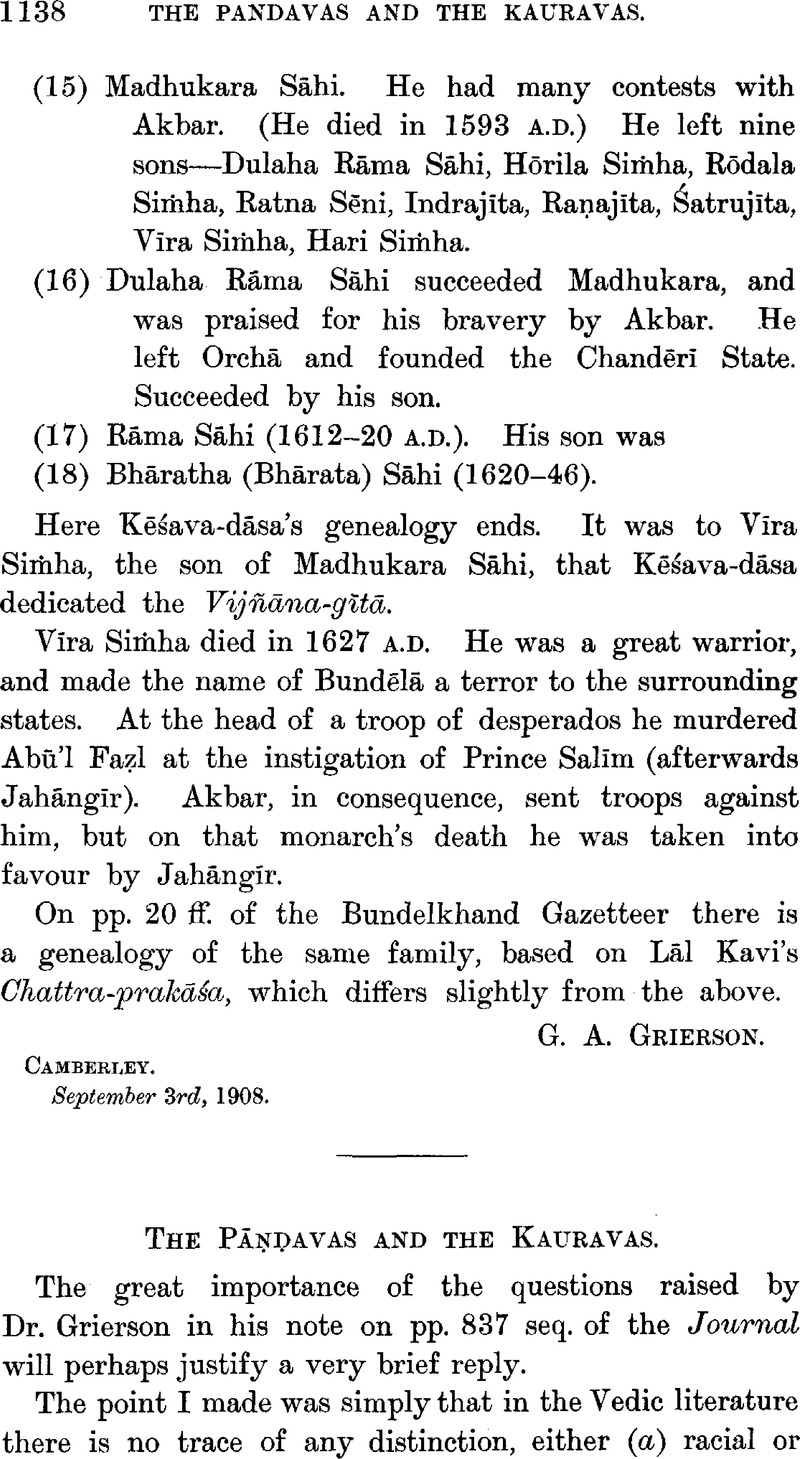No CrossRef data available.
Article contents
The Pāṇḍdavas and the Kauravas
Published online by Cambridge University Press: 15 March 2011
Abstract

- Type
- Miscellaneous Communications
- Information
- Copyright
- Copyright © The Royal Asiatic Society 1908
References
page 1139 note 1 For which there is no specially decisive evidence.
page 1139 note 2 In the sense that the Pañcāllas were earlier immigrants than the Kurus, and might almost be called different nationalities (p. 838).
page 1140 note 1 Correct 400 A.D. on p. 838 of Dr. Grierson's article to 400 B.C., which is evidently meant.
page 1140 note 2 See J.A.O.S., xiii, 61 seq.;Google ScholarGreat Epic of India, p. 397.Google Scholar
page 1140 note 3 The true relation of Brāhmaṇa and Kṣatriya is well laid down by Hopkins, , J.A.O.S., xiii, 72.Google Scholar
page 1141 note 1 See Bühler, , S.B.E., xiv, 2.Google Scholar
page 1141 note 2 J.R.A.S., 1904, p. 91.Google Scholar
page 1142 note 1 Macdonell, , Sanskrit Literature, pp. 213 seq.;Google ScholarOldenberg, , Buddha, pp. 404 seq.Google Scholar
page 1142 note 2 See von Schroeder's, ed., i, pp. xx, xxi,Google Scholar and cf. Pischel, , Ved. Stud., ii, 209, 218 seq.Google Scholar
page 1142 note 3 To obviate misunderstanding it should be noted that I have never doubted the obvious fact that there are earlier and later immigrants into India, but only that the Pañcālas and Kurus respectively represent these different strata. If (as mentioned on p. 836 of my note) the Mahābhārata had given us a war of Kuru-Pañcāla against Kosala-Videha-Magadha, the ethnological and linguistic evidence would have come in very satisfactorily, as explaining the ultimate basis of the war. But the Epic does not give us this, nor does it lend any support to the strange theory adopted in the new edition of the Indian Empire of the ‘ring fence’ (cf. Kennedy, , J.R.A.S., 1908, p. 882).Google Scholar




